I finally dug into the January 2025 update of the rater guidelines and there are a lot of changes! (Here is the previous version if you want to compare.)

Why do we care about the QRG?
While the quality raters have no direct effect on your rankings, their ratings help Google determine whether the changes they make to their ranking systems are improving the quality of results. Those changes might be ones that involve an engineer implementing new code. OR, it's quite likely that the changes implemented are the result of machine learning systems that are learning to do better at ranking what searchers may find helpful.
For more on this, read this fascinating testimony from the DOJ vs Google trial from Professor Douglas Oard. If you're short on time, CTRL-F for "frozen" and "retrained" results. Also, here is more information on what we know about Google's quality raters and how their work is used.
Essentially, the QRG describes the ideals that Google wants their systems to reward. The more we align with the QRG, the more we align with the different signals that Google's systems use to rank content.

It make sense to me that if something new is added to the QRG, then this is something Google is working on training their systems to recognize and reward (or demote.)
Here are some interesting additions in the January 2025 update.
Filler content

As I've said for some time now, make it easy for the searcher to find what they came to your page for!
As Tenny Jesse pointed out in the Search Bar, the additions in the QRG in regards to main content align with Google’s documentation on page experience. Jeannie Hill pointed out that the Gemini models in AI studio can be used to analyze content and determine which is the main and supplementary content.
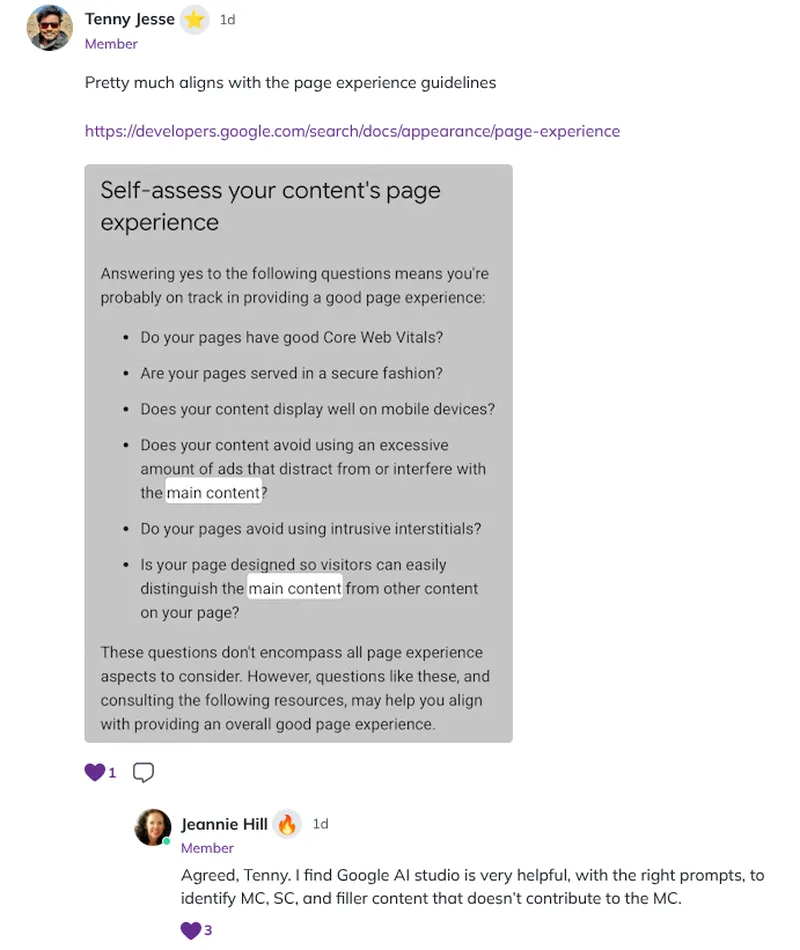
This one is specifically aimed at recipe sites.
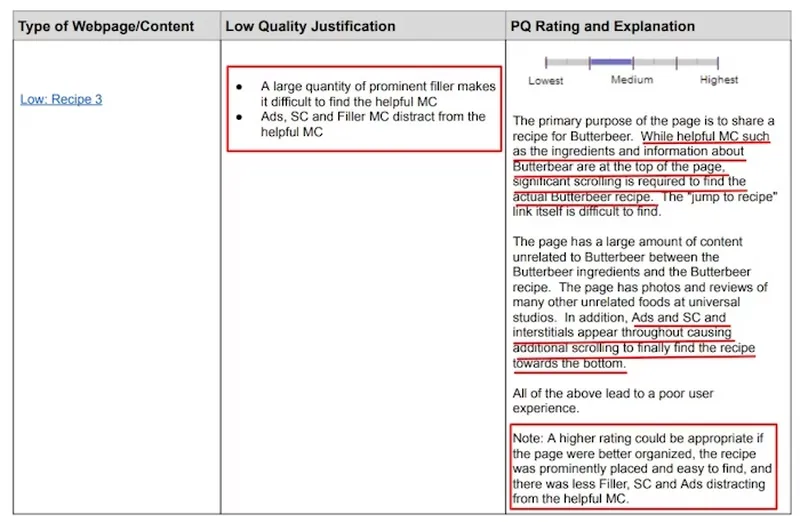
I know this will not be well received by recipe bloggers. Recipe sites rely on scrolls for ad revenue. Casey Markee who works with a number of recipe sites said that in his tests, when the recipe card is added to the top of the page, ad income drops by 78%. I do think that a well organized page with a jump to recipe button that is easy to find can still do well, even with some filler content. We will see.
Scaled content abuse
There is a new section about scaled content abuse. I think this will be relevant to many blogs and to those who are using AI to create copious amounts of content.
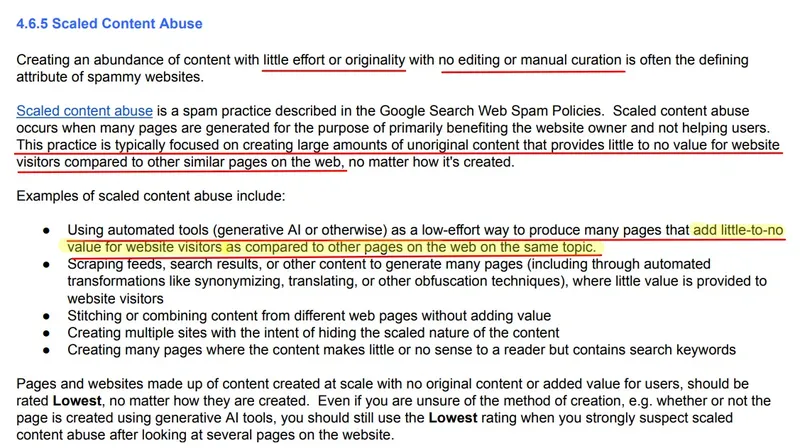
The word “paraphrased” or versions of it increased from 3 mentions in the previous version of the QRG to 25.

Also,

And,
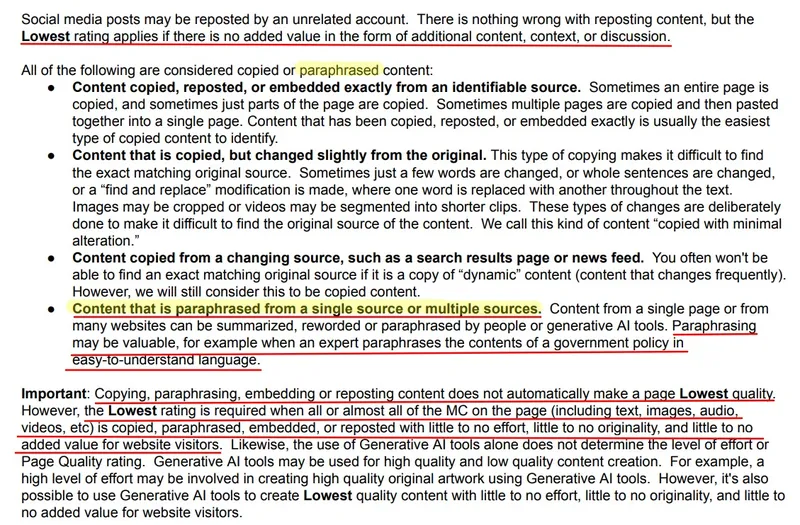
Again, relevant to many blogs. Gone are the days where we can try to rank with generic content that just re-words what others have written. This aligns with Google’s documentation on creating helpful content. They don't need more generic blog posts that repeat what everyone else has already said.
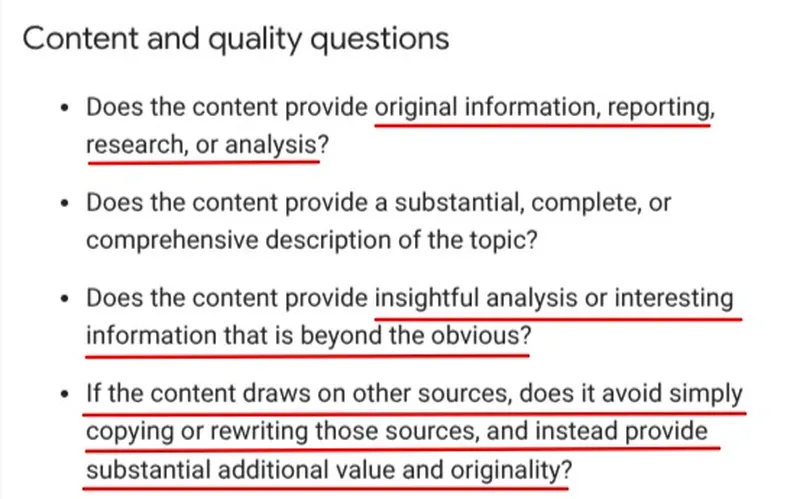
AI generated content
There is also quite a bit about AI generated content. Google is not against using it, but it needs to be valuable content that is helpful to searchers.




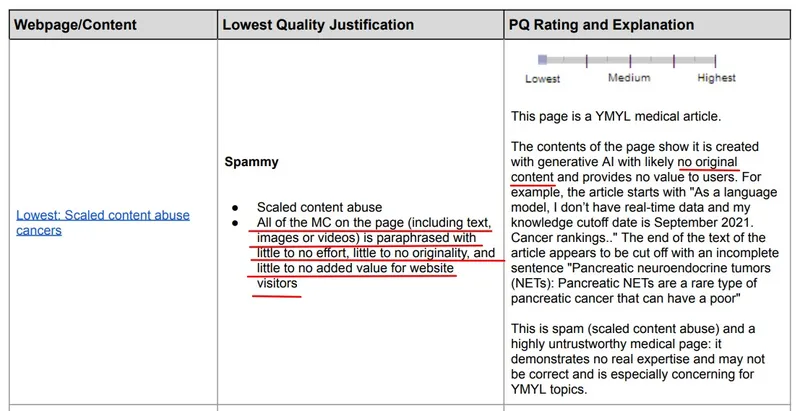
Here is the example linked to above.
This next example is, at first, not so obviously AI. I’d encourage you to look at it first before reading the explanation as to why it is to be considered the lowest quality content.
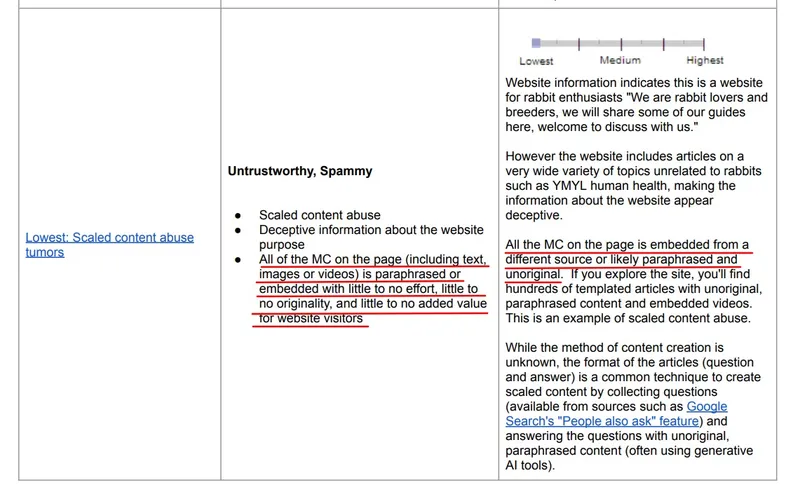
Here is another example which clearly is spam - an AI generated article about chickens on a site about Senior care. What is most interesting though is the part that says, “While the method of content creation is unknown, the format of the articles (question and answer) is commonly used to create low effort, unoriginal, paraphrased content with generative AI tools.
Now, it is not necessarily spam to write a post where you ask and then answer questions.
However it is interesting to note that many sites that were impacted by Google’s helpful content system used a method of ranking whereby they covered as many as Google’s People Also Ask (PAA) results in their content.
Here’s what I think. I think that content that covers related questions has an advantage in search because vector search is looking for content that meets the user’s intent and also does a good job of meeting related micro-intents. Therefore, content written primarily of questions and related questions on a topic previously would rank well before Google started taking into account other signals when predicting whether a page was likely to be helpful. In other words, this type of content looks good to machines, but is not necessarily the content that humans find the most helpful.
Using expired domains for ranking purposes
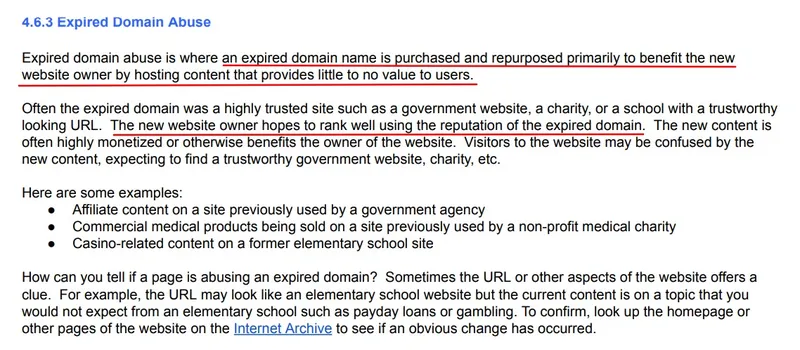
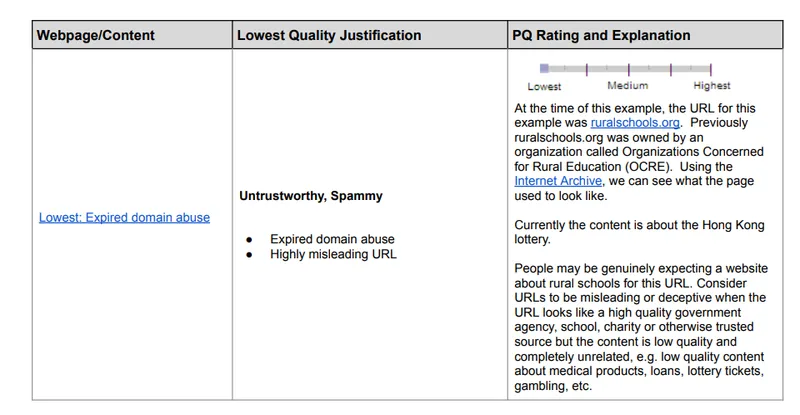
A site is unlikely to get penalized simply because they are using a domain that was previously used. What matters here is the intent. The examples given by Google are extreme such as casino related content on a former elementary school site.
Often a business will purchase the sites of competitors and redirect them to their site. In many cases, this is probably ok. However, if I was investigating a site with a dramatic traffic drop, and I knew they had been using this tactic, I might suggest removing these redirects just in case. Google will not tell you if they are suppressing a site because of this suspected spam tactic.
Site reputation abuse
This section also was added in January of 2025. Site reputation abuse is when third-party content is published on a host site mainly because of the host's already-established ranking signals. The goal of this tactic is for the content to rank better than it could on its own. This is considered a spam tactic.
In 2024, Google handed out manual actions to many sites. Here is an article I wrote with several examples showing news sites having their coupon subdomains heavily penalized. These coupon domains were run by third party sites that were taking advantage of the authority of the news site in order to rank well.
At the time of writing this (January of 2025) we have not yet seen Google enforce this policy algorithmically. However, Danny Sullivan, Google’s Search Liaison did say this would eventually happen. Given that the raters are now given instructions to evaluate for potential site reputation abuse, I expect we will soon be seeing this assessed algorithmically, without the need for manual actions.
Here is Google’s official documentation on site reputation abuse.
And here is how the quality raters are instructed to assess this.
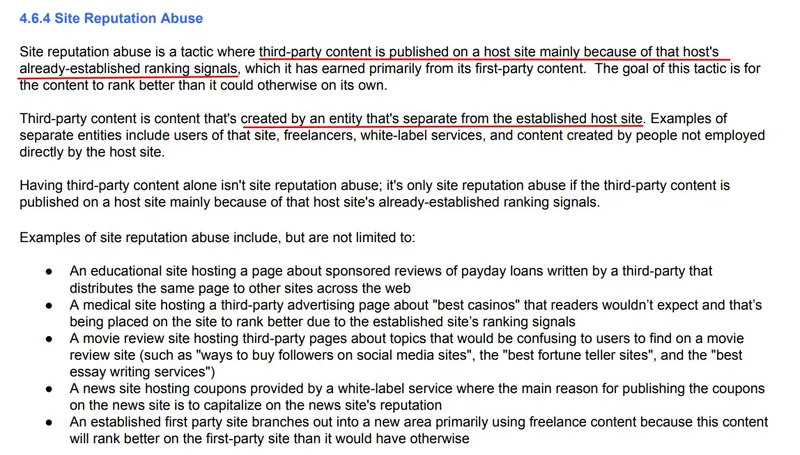

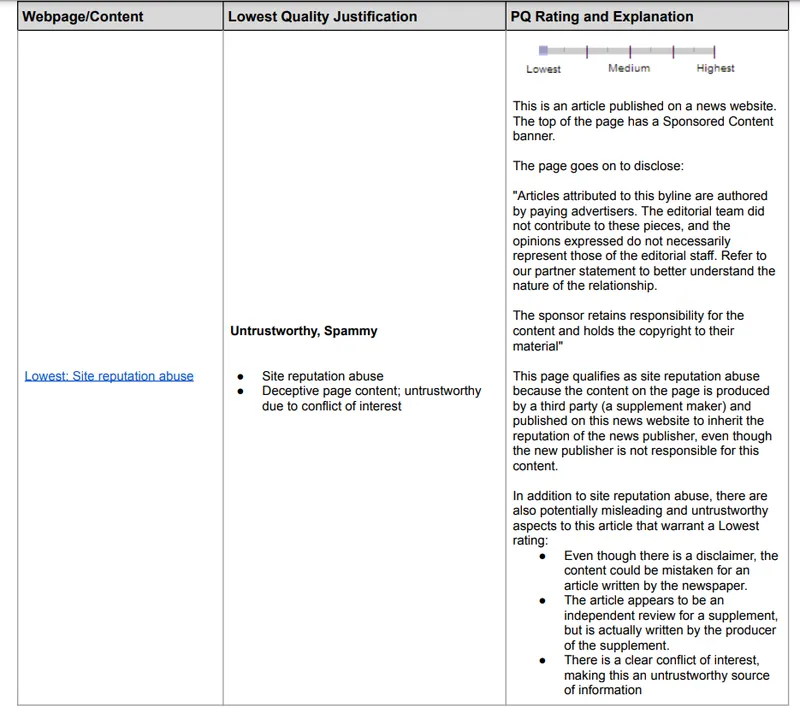
Given these are new additions to the QRG, there’s a good chance we will see Google algorithmically tackle these changes in the months to come.
Live podcast on the QRG
Out now! The 3rd edition of my QRG checklist
This workbook was first published in 2018 and has sold many copies! I’ve wanted to rewrite it for years now. Given the number of changes and how significant I think they will be, I took the time to completely rewrite it.
Here are a few screenshots.
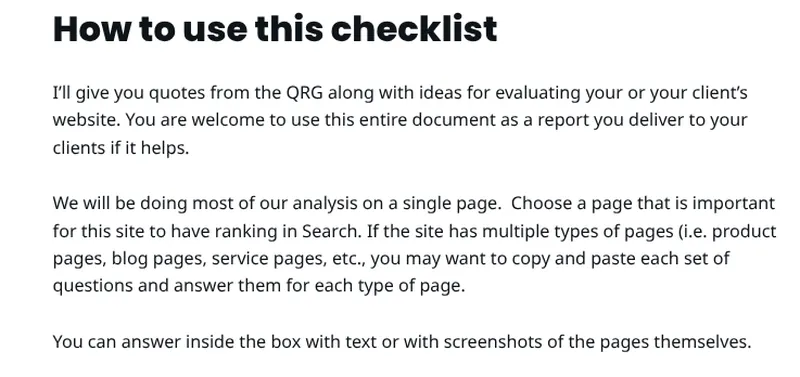
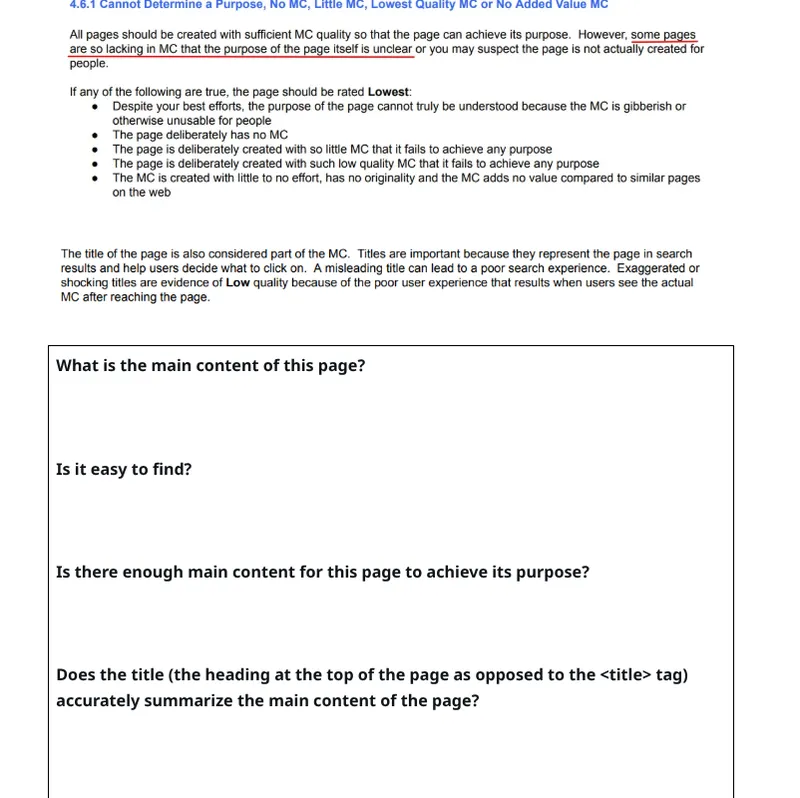
It also includes links to GPTs you can use that are packed with ideas from me, collected over the years, as well as important documentation from Google. You can brainstorm with the GPTs to help assess and improve your content and E-E-A-T.
Buy Now, or get it for free as a Search Bar Pro member.



Comments are closed.